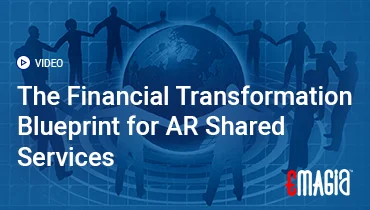In the intricate world of business, financial analysis has always been the compass guiding strategic decisions. From assessing profitability and managing risk to forecasting future performance and optimizing investments, the role of the financial analyst has been paramount. Traditionally, this involved meticulous manual data gathering, complex spreadsheet models, and hours of painstaking number crunching. While effective to a degree, this approach often yielded insights that were backward-looking, time-consuming to produce, and limited by the sheer volume and velocity of modern financial data.
However, a profound revolution is sweeping through the finance sector, driven by the transformative capabilities of Artificial Intelligence (AI). AI is not merely automating existing tasks; it is fundamentally reshaping how financial analysis is conducted, enabling unprecedented levels of speed, accuracy, and predictive power. The integration of AI in finance is moving the discipline from a reactive function to a proactive, strategic powerhouse, empowering finance professionals to uncover hidden patterns, anticipate market shifts, and make more informed decisions than ever before.
This comprehensive guide will delve deep into the world of AI for Financial Analysis, exploring the underlying technologies, its diverse applications, and the immense benefits it delivers. We will also critically examine the challenges and ethical considerations that accompany its adoption, providing a holistic view of this vital frontier in modern finance. Join us as we uncover how AI is not just changing the game, but redefining the very essence of next generation finance.
I. The Foundation: Traditional Financial Analysis and Its Limits
Before embracing the future, it’s essential to understand the historical context and the inherent limitations that AI aims to overcome.
What is Financial Analysis? The Core Discipline
Financial analysis is the process of evaluating businesses, projects, budgets, and other finance-related entities to determine their performance, stability, and potential. It involves examining financial statements, ratios, trends, and market conditions to make informed decisions. The goal is to provide insights that support strategic planning, investment decisions, credit risk assessment, and operational improvements. This is the bedrock upon which all financial strategy is built.
The Role of the Financial Analyst (Traditional)
Traditionally, a financial analyst spends a significant portion of their time on data collection, cleaning, and manual modeling. Their tasks include preparing financial reports, conducting ratio analysis, creating forecasts, valuing assets, and assessing investment opportunities. This often involves extensive use of spreadsheets, requiring meticulous attention to detail and a deep understanding of accounting principles. The traditional financial analyst microsoft Excel user is a common archetype.
Challenges and Limitations of Manual Financial Analysis
Despite their diligence, traditional methods face several hurdles:
- Time-Consuming Data Preparation: Gathering, cleaning, and consolidating data from disparate sources can consume up to 80% of an analyst’s time, leaving little for actual analysis.
- Limited Scope of Data: Manual processes can only handle a finite amount of structured data, often overlooking valuable unstructured information (e.g., news articles, social media sentiment) that could provide deeper insights.
- Lagging Indicators: Analysis is often retrospective, based on historical data, making it difficult to predict rapid market changes or emerging risks effectively.
- Human Bias and Error: Manual calculations and interpretations are susceptible to human error and unconscious biases, impacting accuracy.
- Lack of Scalability: As data volume and complexity grow, manual analysis becomes increasingly unsustainable, hindering the ability to scale operations.
- Reactive vs. Proactive: Traditional methods often lead to reactive decision-making rather than proactive strategic planning.
These limitations highlight the urgent need for more dynamic and intelligent finance works solutions.
II. The AI Revolution in Finance: How AI Transforms Analysis
Artificial Intelligence is fundamentally reshaping the landscape of financial analysis, moving it into an era of unprecedented speed, accuracy, and foresight.
Defining AI for Financial Analysis
AI for Financial Analysis refers to the application of Artificial Intelligence and Machine Learning (ML) technologies to automate, enhance, and intelligentize the processes of collecting, processing, interpreting, and predicting financial data. It enables analysts to uncover deeper insights, identify complex patterns, and make more accurate forecasts than traditional methods. It’s about augmenting human intelligence with computational power, making it a powerful ai finance tool.
Core AI Technologies Driving Financial Insights
The power of AI-powered financial analysis stems from several key technologies:
- Machine Learning (ML): At the core, ML algorithms learn from vast datasets to identify patterns, make predictions, and adapt over time without explicit programming. This includes supervised learning (for classification and regression), unsupervised learning (for clustering and anomaly detection), and reinforcement learning. Machine learning in banking risk management is a prime example of its application.
- Natural Language Processing (NLP): NLP enables AI systems to understand, interpret, and generate human language. This is crucial for analyzing unstructured financial data from news articles, analyst reports, earnings call transcripts, social media, and legal documents to extract sentiment, key events, and risk signals.
- Generative AI (Gen AI): A cutting-edge subset of AI, generative AI in finance can create new content, such as drafting financial reports, summarizing complex data narratives, generating hypothetical financial scenarios, or even crafting personalized communications based on extracted insights. This moves beyond analysis to intelligent content creation.
- Robotic Process Automation (RPA): While not strictly AI, RPA often works in conjunction with AI to automate repetitive, rule-based tasks like data entry, report generation, and data transfer between systems, freeing up analysts for higher-value work.
- Predictive Analytics: This utilizes statistical algorithms and ML models to forecast future financial performance, identify potential risks, and predict market trends with greater accuracy.
These technologies combine to form the backbone of modern financial analysis AI solutions.
The Shift from Reactive to Predictive Analysis
One of the most significant shifts brought by AI for Financial Analysis is the move from a reactive, backward-looking approach to a proactive, predictive one. Instead of merely reporting what happened, AI allows finance teams to anticipate what *will* happen, enabling them to make timely interventions and capitalize on emerging opportunities. This transforms the finance function into a truly strategic partner.
III. Key Applications of AI in Financial Analysis
The practical applications of AI in financial analysis are vast and continue to expand across various domains.
1. Enhanced Financial Forecasting and Budgeting
Traditional forecasting often relies on historical averages and linear models. AI for financial analysis brings:
- Dynamic Forecasting: ML models can analyze complex, non-linear relationships in data, incorporating a wider range of variables (economic indicators, market sentiment, seasonal trends) to generate more accurate and adaptive forecasts. This is a powerful ai finance tool.
- Scenario Modeling: AI can rapidly simulate thousands of “what-if” scenarios, allowing finance teams to understand the potential impact of different market conditions or strategic decisions on budgets and financial outcomes.
- Automated Variance Analysis: AI can quickly identify significant deviations from budget and pinpoint the underlying drivers, accelerating the analysis process.
This transforms the accuracy and speed of financial planning, making copilot budget app functionalities more sophisticated.
2. Advanced Credit and Market Risk Assessment
Assessing risk is paramount in finance. AI for financial analysis provides deeper insights:
- Predictive Credit Scoring: ML algorithms can analyze a vast array of data points (beyond traditional credit scores) to predict the likelihood of default with greater precision, identifying subtle risk signals that human analysts might miss. This is a key area for ai in credit risk management.
- Market Risk Prediction: AI can analyze market volatility, news sentiment, and macroeconomic factors to predict potential market downturns or opportunities, aiding in portfolio adjustments.
- Fraud Detection: AI algorithms can monitor transactions in real-time for unusual patterns or anomalies that might indicate fraudulent activity, providing robust fraud detection in finance.
This proactive risk management is a significant benefit of ai in financial risk management.
3. Optimized Investment Strategies and Portfolio Management
AI is reshaping how investment decisions are made:
- Algorithmic Trading: AI-powered algorithms execute trades at high speeds based on complex market signals and predictive models.
- Portfolio Optimization: ML can analyze vast amounts of market data to recommend optimal asset allocations that maximize returns while minimizing risk, tailored to specific investor profiles.
- Sentiment Analysis: NLP can analyze news, social media, and analyst reports to gauge market sentiment towards specific assets or companies, providing a qualitative layer to quantitative analysis.
This makes ai financial analyst capabilities increasingly sophisticated in investment roles.
4. Streamlined Audit and Reconciliation Processes
AI enhances accuracy and efficiency in core accounting functions:
- Automated Reconciliation: AI can automatically match transactions across disparate systems (e.g., bank statements, ERP, sub-ledgers), flagging discrepancies for human review. This is where copilot accounting shines.
- Anomaly Detection in Audits: AI can quickly identify unusual transactions, potential errors, or suspicious activities within large datasets, allowing auditors to focus their efforts on high-risk areas.
- Automated Data Extraction: Intelligent Document Processing (IDP) extracts data from invoices, receipts, and other financial documents, feeding clean, structured data directly into accounting systems.
This contributes to a more efficient and accurate co pilot accounting environment.
IV. The Transformative Benefits of AI-Powered Financial Analysis
The adoption of AI for Financial Analysis delivers a compelling array of advantages that directly impact a company’s financial performance and strategic agility.
1. Unprecedented Speed and Efficiency
AI automates data collection, processing, and initial analysis, drastically reducing the time spent on manual tasks. This frees up finance professionals to focus on higher-value activities like strategic planning, complex problem-solving, and business partnering. It enables finance and financial teams to operate at a speed previously unimaginable.
2. Superior Accuracy and Reduced Errors
By minimizing human intervention in repetitive, data-heavy tasks, AI significantly reduces the risk of human error. This leads to cleaner, more reliable financial data, enhancing the integrity of reports, forecasts, and overall financial statements. The precision offered by best financial ai tools is a game-changer.
3. Deeper Insights and Strategic Decision-Making
AI’s ability to process vast, diverse datasets and identify complex patterns (including those hidden in unstructured data) uncovers insights that would be impossible for humans to find manually. This leads to a more comprehensive understanding of financial performance, risks, and opportunities, empowering leaders to make more informed, data-driven strategic decisions. This is the true power of financial analysis AI.
4. Empowering the Modern Financial Professional
AI transforms the role of the financial analyst from a data processor to a strategic advisor. By handling the mundane, AI allows professionals to engage in deeper analysis, critical thinking, and value-added activities, enhancing job satisfaction and career development. This is the essence of ai in finance certification and professional development.
5. Improved Regulatory Compliance and Governance
AI can help ensure consistent application of financial rules, monitor transactions for compliance with regulations (e.g., AML, KYC), and generate detailed audit trails. This strengthens governance, reduces compliance risks, and simplifies audit processes, especially in the complex world of finance and co.
V. Navigating the Landscape: Challenges and Considerations for AI in Financial Analysis
While the benefits are transformative, implementing AI for Financial Analysis is not without its challenges and critical considerations.
1. Data Quality and Bias Issues
AI models are only as good as the data they are trained on. Biased, incomplete, or inaccurate historical data can lead to skewed predictions and discriminatory outcomes. Ensuring high data quality and actively mitigating bias in datasets is paramount for reliable AI in finance applications.
2. Explainability and “Black Box” Concerns
Some complex AI models, particularly deep learning networks, can operate as “black boxes,” making it difficult to understand how they arrive at specific conclusions. In highly regulated financial environments, the ability to explain AI decisions (explainable AI or XAI) is crucial for compliance, auditing, and building trust. This is a significant challenge for ai financial analyst roles.
3. Implementation Complexity and Cost
Integrating AI solutions with legacy financial systems, managing vast datasets, and building robust AI models can be technically complex and require substantial investment in technology and specialized talent. The finance cost of initial setup can be high.
4. Ethical Implications and Governance
The use of AI in financial decision-making raises ethical questions around fairness, transparency, and accountability. Robust governance frameworks, clear ethical guidelines, and continuous monitoring are essential to ensure AI is used responsibly and avoids unintended consequences. This is vital for responsible ai in finance adoption.
5. Talent Gap and Reskilling Needs
The widespread adoption of AI requires a new skill set for finance professionals. Organizations need to invest in reskilling their workforce to understand AI outputs, manage AI systems, and leverage AI insights effectively. The demand for professionals with an ai in finance certification is growing rapidly.
Emagia: Pioneering Autonomous Finance with Advanced AI for Financial Analysis
For enterprises seeking to achieve unparalleled strategic foresight and operational excellence in their financial operations, Emagia offers a transformative, AI-powered Autonomous Finance platform that directly embodies the future of AI for Financial Analysis. Emagia’s solutions are specifically engineered to intelligentize and automate the entire Order-to-Cash (O2C) cycle, providing finance leaders with real-time insights and predictive capabilities.
Emagia’s platform leverages cutting-edge Artificial Intelligence, including generative AI for finance, Machine Learning, and Natural Language Processing, to transform how financial data is processed and analyzed. Its capabilities extend to:
- Intelligent Cash Flow Forecasting: Providing highly accurate predictions of future cash inflows by analyzing historical payment patterns, customer behavior, and market trends, far beyond traditional methods.
- AI-Powered Credit Risk Assessment: Offering real-time insights into customer creditworthiness, predicting potential defaults, and recommending optimal credit limits, making it a leading financial analysis AI solution for risk management.
- Automated Financial Reporting and Insights: Utilizing generative AI to automatically draft financial reports, summarize complex data narratives, and provide actionable explanations for variances, significantly reducing manual effort for the ai financial analyst.
- Predictive Collections Analytics: Identifying at-risk accounts early and recommending optimal collections strategies to minimize bad debt and accelerate cash conversion.
- Intelligent Data Extraction and Reconciliation: Automating the capture of financial data from diverse sources and intelligently matching transactions for seamless reconciliation, enhancing copilot accounting functionalities.
By providing a comprehensive suite of AI finance tools, Emagia empowers finance professionals to move beyond transactional activities to become true strategic partners. It enables organizations to make faster, more accurate, and data-driven decisions, optimize working capital, mitigate risks proactively, and achieve unprecedented levels of financial agility and profitability. Emagia is at the forefront of delivering next generation finance capabilities, helping businesses unlock their full financial potential and embrace a truly autonomous future.
Frequently Asked Questions (FAQs) About AI for Financial Analysis
What is AI for Financial Analysis?
AI for Financial Analysis involves applying Artificial Intelligence and Machine Learning technologies to automate, enhance, and intelligentize the processes of collecting, processing, interpreting, and predicting financial data, enabling deeper insights and more accurate forecasts.
How does AI in finance help financial analysts?
AI in finance helps financial analysts by automating repetitive tasks like data collection and reconciliation, providing real-time insights, generating more accurate forecasts, identifying hidden patterns in data, and supporting data-driven decision-making, allowing analysts to focus on strategic work. It acts as a powerful ai financial analyst tool.
What are the main benefits of AI-powered financial analysis?
The main benefits of AI-powered financial analysis include unprecedented speed and efficiency, superior accuracy and reduced errors, deeper insights for strategic decision-making, empowerment of finance professionals, and improved regulatory compliance and governance.
What are the challenges of implementing AI in financial analysis?
Challenges include ensuring high data quality and mitigating bias, addressing “black box” concerns (explainability), managing implementation complexity and cost, navigating ethical implications, and bridging the talent gap by reskilling finance professionals for next generation finance roles.
What is generative AI in finance?
Generative AI in finance refers to AI models that can create new content, such as drafting financial reports, summarizing complex data narratives, generating hypothetical financial scenarios, or even crafting personalized communications based on underlying financial data and insights.
Can AI for financial analysis predict market trends?
Yes, AI for financial analysis can predict market trends with greater accuracy than traditional methods. By analyzing vast amounts of market data, economic indicators, news sentiment, and historical patterns, AI and Machine Learning models can identify subtle signals and forecast potential market movements.
What kind of financial analysis AI tools are available?
Available financial analysis AI tools range from specialized platforms for cash flow forecasting, credit risk assessment, and fraud detection to broader AI copilots that integrate with ERP systems for automated reporting, reconciliation, and strategic decision support. Many leverage machine learning in finance and NLP.
Conclusion: The Strategic Imperative of a Modern TMS
The era of paper-based and semi-digital invoicing is rapidly drawing to a close. Customer e-Invoicing stands as a pivotal technology, transforming the way businesses transact and manage their financial flows. By embracing true electronic invoicing, organizations unlock a cascade of benefits, from substantial cost reductions and unparalleled efficiency to improved accuracy, faster payments, and enhanced compliance.
The strategic imperative is clear: to move beyond traditional methods and adopt a robust electronic invoicing system that seamlessly integrates with existing operations. This shift is not merely a technological upgrade; it’s a foundational step towards a fully automated and intelligent Order-to-Cash cycle, empowering finance teams to focus on strategic analysis rather than administrative burdens. By making Customer e-Invoicing a cornerstone of their financial strategy, businesses can secure a competitive edge, foster stronger relationships, and pave the way for a more agile, profitable, and sustainable future.



